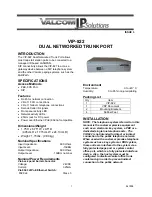
The default ELAN name
•
The LEC address and corresponding LES
•
The ELAN name and corresponding LES
•
The ATM address prefix and corresponding LES
•
The ELAN type and corresponding LES
•
The ELAN name
•
The corresponding ATM address of a LANE server
•
A LANE client MAC address
•
A client MAC address with the corresponding ELAN name
•
The LANE client ATM template
•
ATM Addresses
ATM addresses are 40−digit addresses that use the ILMI protocol to provide the ATM prefix address of the
switch for the LECs. This process configures the initial 26 (hexadecimal) digits of the ATM address, which
are identical for each LEC. The next 12 (hexadecimal) digits of the ATM address are known as the ESI. There
is also a two−digit SEL field. To provide this part of the ATM address, Cisco provides a pool of 16 MAC
addresses for each ATM module, although only 4 are used. The following assignments pertain to the LANE
components:
The prefix fields are the same for all LANE components and indicate the identity of the ATM switch.
•
All LECSs are assigned an ESI field value from the first pool of MAC addresses assigned to the
interface.
•
All LESs are assigned an ESI field value from the second pool of MAC addresses.
•
The BUS is assigned an ESI value from the third pool of MAC addresses.
•
The LECS is assigned an ESI value from the fourth pool of MAC addresses.
•
Integrated Local Management Interface (ILMI)
The ILMI protocol was defined by the ATM Forum. It aids in initialization and configuration of ATM LECs.
ILMI uses the Simple Network Management Protocol (SNMP) to share information between an ATM client
and an ATM switch. It uses a well−known permanent connection to the LECS that has a VPI of 0 and a VCI
of 17.
The basic functions of ILMI are to enable the LEC to discover the ATM address of the LECS and to allow the
LEC to tear down virtual circuits when they are no longer in use. ILMI allows the ATM switch to share its
ATM prefix with the LECs, which lets the LECs share the same initial 13 bytes of their own 20−byte ATM
address. This scheme makes it easier to route traffic between switches, because the switch only needs to look
at the first 13 bytes to determine which ATM switch has the end−station. ILMI is an extremely popular way to
resolve addressing in ATM networks.
LANE Communication
Now that we have looked at the individual components that make up the LANE model, let’s examine the
communication process. Like X.25 and Frame Relay, LANE components communicate by using SVCs.
Several different types of SVCs exist in the ATM LANE implementation; they are called virtual channel
connections or virtual circuit connections (VCCs), depending on the standards documents you refer to. These
VCCs are as follows:
Unidirectional VCCs
•
Bidirectional VCCs
•
Point−to−multipoint control distribute VCCs
•
Point−to−point configure direct VCCs
•
172
Summary of Contents for Catalyst 1900 Series
Page 1: ......
















































